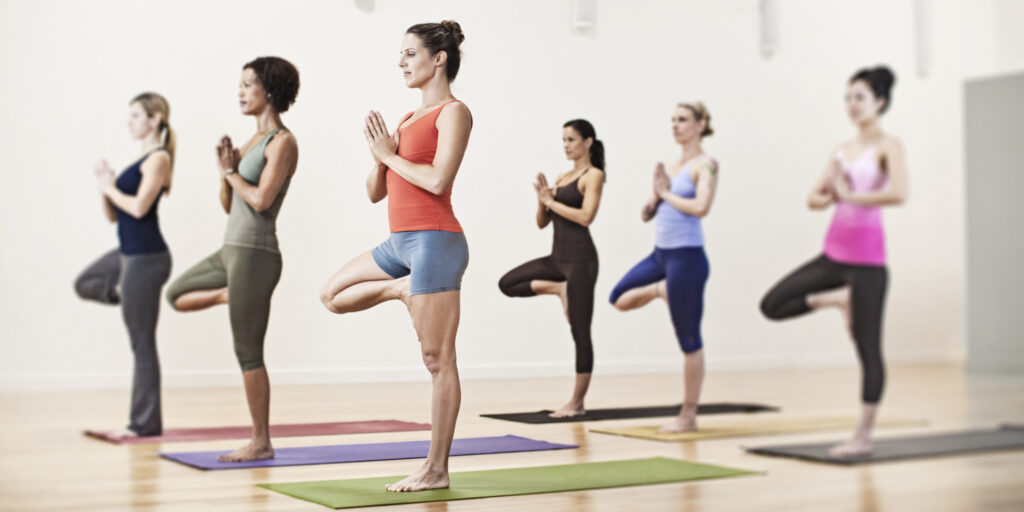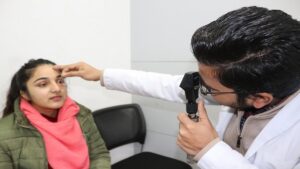
Hemoglobin Test
The practice of Yoga is considered an appropriate method of improving and maintaining physical and emotional health. A growing body of evidence supports the idea that yoga benefits the physical and psychological state by regulating the hypothalamic-pituitary-adrenal (HPA) axis and, therefore, the sympathetic systema nervosum (SNS).
How does Yoga work on the body?
Studies comparing the results of Yoga and exercise seem to the point that in both healthy and sick populations, yoga could also be as effective or maybe better than another exercise in improving a range of measures of health-related outcomes. However, there’s a requirement for further research in this area.
What are the health benefits?
By practising Yoga, you connect your mind and body, taking you to a replacement level of body awareness. More scientifically speaking, yoga has both psychological and physiological benefits. one of the foremost critical physiological benefits of yoga (and the initial goal of the many newcomers) is to extend the system’s flexibility and range of motion. However, if instructed incorrectly, yoga practice can contribute to joint injury, and damage to muscles, ligaments, and tendons. That’s why it’s so important that the yoga instructor knows the system’s anatomy and physiology.
It burns calories!
Traditional yoga doesn’t look incredibly dynamic compared to, for example, regular fitness. Yoga classes that rely solely on lying down and breathing carefully are unlikely to contribute to significant weight loss. In contrast, more intense yoga styles, like ashtanga yoga, maybe surprisingly just like other kinds of vigorous exercise. Fildena is best for potency.
Physiological benefits:
- relative homeostasis of the autonomic systema nervosum, with an inclination to dominate the parasympathetic systema nervosum instead of the same old dominance of the sympathetic systema nervosum induced by stress
- the decrease in vital sign
- the drop-in rate of respiration
- lowering vital sign
- increasing Galvanic Skin Response (GSR)
- It hurries up the metabolism.
- Your body’s metabolism determines your overall health.
Fast metabolizers burn more calories with any activity, and even at rest, compared to slow metabolizers.
Yoga hastens metabolism by improving blood flow. Poor blood circulation slows down the metabolism. Deep and slow breathing during yoga allows the arteries to open up and release pressure, thereby increasing blood flow.
Yoga poses also massage the digestive organs. This helps with the smooth functioning of the canal, which also intensifies the metabolism.
Find an appropriate place to practice yoga reception.
Before you begin exercising, make some space in your home. Yoga is best practised in clean, spacious rooms – in such conditions, not only can we move more freely, but also it’s easier for us to clear our minds and obtain obviate the racing of thoughts. If the temperature outside isn’t too low, it’s worth opening a window to oxygenate the body better.
Beginners don’t have to buy a yoga mat, although it’s much easier to exercise on a unique non-slip surface. However, if you’re undecided if you’ll continue yoga in the future, do the exercises on a blanket folded in half. To stop it from sliding on the ground, put it on the carpet.
Put on loose-fitting clothes.
It seems obvious, but it’s worth remembering that we practice yoga in loose, non-binding outfits. Over-the-knee leggings and a cotton blouse will work best. We don’t wear shoes – we train barefoot or in socks. For convenience, it’s good to attach your hair and take away makeup.
Learn the principles of breathing
For yoga reception to be as effective because the one with the teacher, beginners should learn proper breathing. Yoga combines three ways of breathing: collarbone, thoracic and abdominal. We usually breathe shallowly on a day to day – we are hunched over, and settled down, which suggests we draw little air into our lungs. Only our collarbones and also the chest slightly rise. The healthiest breath is the one performed by the abdominal tract, and it’s the key to inner harmony.
Yoga could be a natural remedy for stress, depression, and anxiety. On the one hand, asanas reduce the tension that causes stress, and on the opposite, they oxygenate, remove fatigue, and provide you with energy. They are amazing pills to treat potency. Learn six asanas that will ease symptoms of anxiety, and depression and remove distressing thoughts.
Yoga restores mental soundness and thus helps to fight depression, stress, and anxiety. It’s also a natural therapy recommended in periods of nervous prostration and reduced vitality.
The items below are selected to possess a calming and energizing effect on the mind and body. By doing them regularly, you may ensure an honest mood and free yourself from internal tensions.
Yoga for depression and stress – how often to exercise?
To feel the consequences of the exercises, perform these asanas a minimum of 3 times per week. However, you’ll be able to return to them whenever you’re feeling the necessity to. Allow 2-3 minutes for every item. Remember about vital, deep breaths.
Mountain Pose with Raised Arms (Urdhva Hastasana in Tadasana)
This position builds a way of inner balance and stability. Stretching your hands up will cheer you up and build your confidence.
Execution: Take the tadasana position: get on your feet straight along with your feet together, and distribute your weight evenly on both legs. Pinch your shoulder blades down, lower your shoulders and tuck your tailbone up so that your pelvis is perpendicular to the ground. Then raise your arms so that they form a line with the body. The elbows should be completely straight, with the palms facing one another. While inhaling, pull your arms up, trying to stretch your spine the maximum amount possible. Look straight ahead. Breathe steadily and calmly. To urge out of the pose, slowly lower your arms down.
Head Down Dog Pose (Adho Mukha Svanasana)
A dog with its head down oxygenates the brain and thus revives and energizes people fighting symptoms of depression. It also allows you to induce and obviate the stress accumulated within the shoulders, neck, and loins.
Execution:
- Attend the kneeling position and support yourself before your arms.
- Curl your toes up and smoothly lift your hips while straightening your arms, legs, and back. Your body should take the form of an inverted V letter.
- Hide your head between your shoulders. The hands, head, neck, and spine should be in line.
- Relax your shoulder, neck, and neck muscles.
- Stay within the position for some deep breaths.
- To urge out of the position, take success bringing your right leg first, then your left leg to the hands on the ground, and slowly round your back to a standing position.




